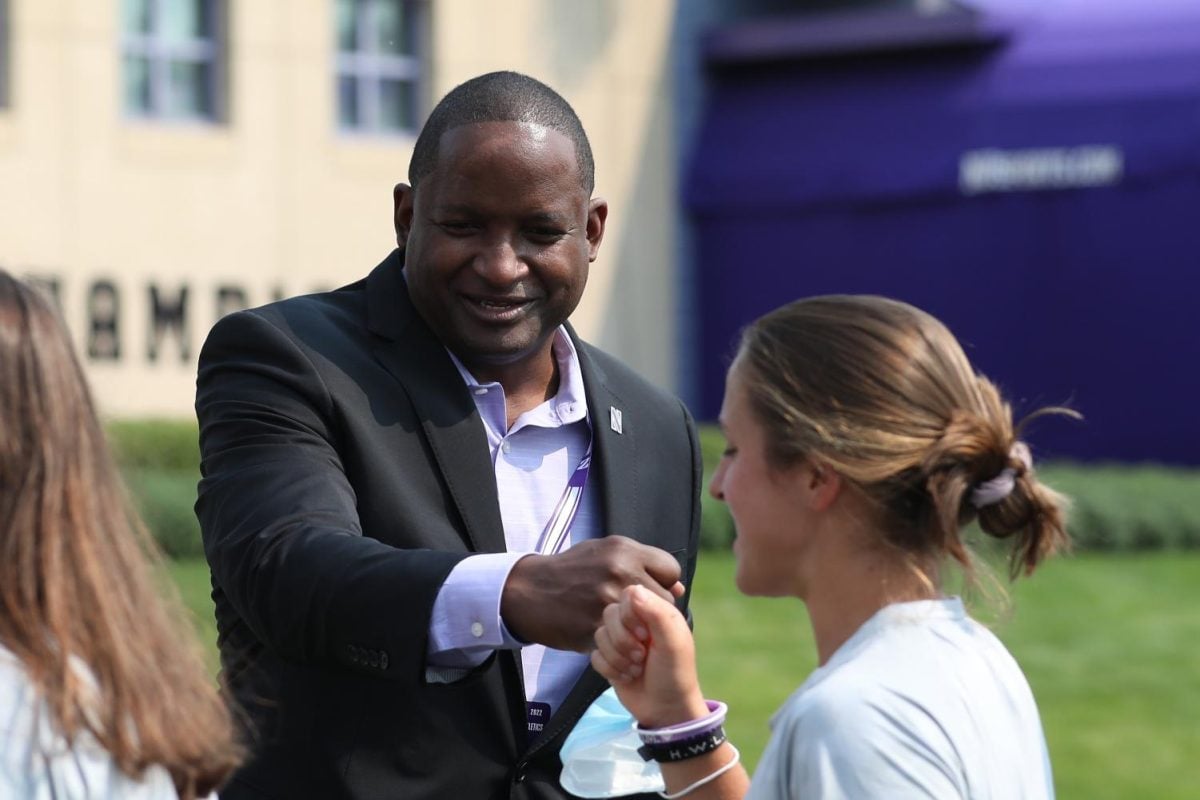Northwestern’s defensive rebounding can usually be described as one of the following: bad or worse.
Since the 2002-03 season, NU has ranked last in the Big Ten in defensive rebounding percentage over six of eight seasons.
It’s the sort of trend that makes NU’s effort under the boards against No. 1 Ohio State all the more impressive. The best team in the country managed only three offensive rebounds in their visit to Welsh-Ryan Arena last Saturday. The Buckeyes managed an offensive rebound on only 15 percent of their missed shots, well below their season average of 35.8 percent.
NU also performed well against Minnesota prior to its near upset of Ohio State.
Minnesota currently leads the Big Ten in offensive rebounding percentage, but NU held the Gophers at six percentage points below their average.
In the two games combined, NU rebounded 75 percent of missed shots on the defensive end. And Ohio State and Minnesota are no slouches when it comes to offensive rebounding.
On the season NU secures about 70 percent of missed shots at the defensive end, almost exactly on par with the Big Ten average. Of course, “average” isn’t ordinarily a compliment. But because NU’s rebounding performance is usually an outlier on the wrong side of the plot, it constitutes high praise.
The question for NU is if the improvement this year is a durable change or just a deviation. Even as the numbers have improved, the structural flaws that have traditionally yielded more long-term problems haven’t changed.
The biggest cause of NU’s rebounding struggles is an almost exclusive reliance on zone defenses. The zone is a Faustian bargain for NU. It gives them a chance to match up with quicker opponents on the perimeter but creates significant rebounding problems.
In a man-to-man defense, rebounding assignments are simple. The defensive player is already assigned to the offensive player they need to stop from getting an offensive rebound. It’s the way most aspiring elementary school basketball players first learn to play defense for a reason: It’s structured and easy to execute.
Defensive assignments are more fluid in a zone, making it difficult to get to all the offensive players. Even when every player finds someone to box out, the matchup may not favor NU. Take the wing players in NU’s 1-3-1. Depending on ball position, a player may pressure a point guard at the top of the key, an off guard in the corner or sink back in the lane to help on post players. This last matchup is a difficult rebounding assignment for the usually outsized defensive player.
NU’s use of zone defenses hasn’t changed, so the explanation for the recent improvements likely results from improved rebounding by the players. Here it’s tough to find any numerical reasons for the improvement. NU has a taller than average team – the 21st tallest in the country according to the “effective height” measure from Kenpom.com – which may help with rebounding.
But this can’t be the only explanation. In past seasons NU has ranked highly in this category and still rebounded poorly. The 2006-07 team ranked 10th in effective height but finished last in the conference in both offensive and defensive rebounding.
Given that better rebounding has occurred without a clear reason for the change, it might be too much to expect the improvement to stick. NU has experienced one-year aberrations in rebounding before. Last year the team improved in offensive rebounding percentage, jumping from its typical last-place finish to 7th in the conference. Despite its solid recent performances, NU has fallen back to 10th place in the conference this season.
The lesson for defensive rebounding is clear: Enjoy the improvement while it lasts, but don’t expect it to be a long-term deal. Eight years of history suggest it’s far too early to declare NU’s era of bad defensive rebounding over.
















